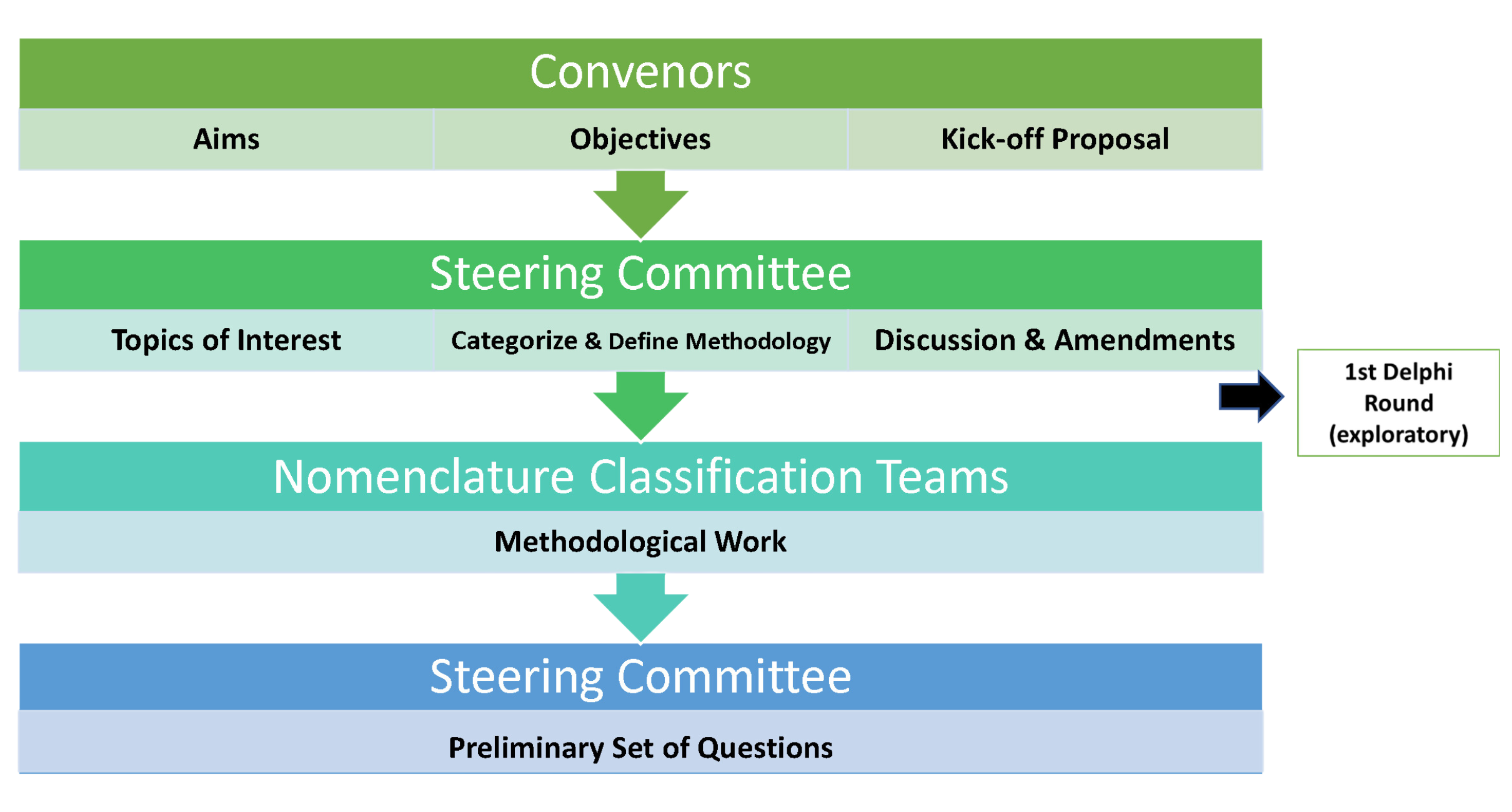In order to reach consensus and to have a new name adopted by the international medical and scientific community, the Delphi method was used to change Sjögren’s Syndrome to Sjögren’s Disease and to drop the term secondary Sjögren’s.
Changing a disease name takes time and great effort by many people. Using an internationally accepted methodology for nomenclature change is essential in order to receive acceptance by the medical and scientific community. For the Sjögren’s Nomenclature Initiatave, we used the Delphi method. The World Health Organization considers the Delphi method to be the preferred process for a disease name change. The Delphi method is a systematic research technique that uses a panel of experts to generate consensus on a topic through a series of questionnaires. For the Sjögren’s nomenclature initiative, an extensive bibliometric search on historical nomenclature about Sjögren’s led to expert discussion and creation of the surveys.
International Consensus on Nomenclature and Classification for Sjögren’s Initiative
To ensure worldwide participation, we formed an international working group to engage in scientific deliberation and gain international consensus on nomenclature. The Sjögren’s Foundation’s Vice President of Medical and Scientific Affairs, Kathy Hammitt, MA , Alan Baer, MD, MACR, Johns Hopkins School of Medicine (and the Foundation's Medical and Scientific Advisory Council Chair), were joined by Manuel Ramos-Casals, MD, University of Barcelona, and Sjogren Europe patient representative Coralie Bouillot to bring key opinion leaders and patients in Sjögren’s together.
The group set the key aim, required work, and methodology to ensure consensus.
- Aim: Develop a position paper for the nomenclature and classification of Sjögren’s through international consensus following widespread scientific deliberation
- Methodologic work: First, research the nomenclature of the disease through bibliometric research and analysis. Second, research terminology to designate the relationship of Sjögren’s to co- existent diseases through a systematic literature review.
- Methodology: Use a Delphi process informed by bibliometric analyses and literature reviews. Provide equal weight to votes of patient representatives and clinicians.

First Survey Distributed to Clinicians and Patients
Questions were created through the methodological process and surveys were sent to Clinicians and Patients around the world. The questions were:
- Do you agree with maintaining the use of the eponym “Sjögren”?
- Do you agree to recommending the usage of the non-possessive form "Sjögren"?
- Do you agree with maintaining the term "syndrome"?
- Do you agree with changing to the term "disease"?
- Do you agree to maintaining the use of the term “primary”?
- Do you agree to maintaining the use of the term “secondary”?
- Do you agree with changing to the term “associated”?
The results showed that the majority of patients and clinicians were in favor of changing the name to Sjögren’s Disease. However, the term secondary was a point of debate as all patients wanted the term to be abolished but clinicians were still concerned about having some term to describe a patient that has multiple rheumatic diseases.
Second Survey Distributed to Clinicians and Patients
The working group then developed the second survey, based on the first survey answers and live discussions and debate at the International Symposium on Sjögren’s Syndrome in Rome, 2022. Based on discussions and feedback from the first Delphi round, three new options for naming the disease were included in the second round:
- Replacing the use of "syndrome" with "autoimmune epithelitis"?
- Do you agree with replacing the use of "syndrome" with "autoimmune exocrinopathy"?
- Do you agree with replacing the name with the acronym "SJÖGREN"?
The second survey:
With respect to the disease currently known as “Sjögren’s syndrome”,
- Do you agree with maintaining the use of "syndrome"?
- Do you agree with replacing the use of "syndrome" with "disease"?
- Do you agree with replacing the use of "syndrome" with "autoimmune epithelitis"?
- Do you agree with replacing the use of "syndrome" with "autoimmune exocrinopathy"?
- Do you agree with replacing the name with the acronym "SJÖGREN"?
- The distinction between "primary" and "associated" disease does not apply to other systemic diseases (SLE, RA, systemic sclerosis, etc). Do you think there are objective reasons for this differentiation to be applied solely to Sjögren’s?
- How important do you consider the use of the terms "Primary" and "Secondary" or "Associated" in order to differentiate whether someone has Sjögren’s alone or in conjunction with another autoimmune disease?
- In which field do you believe it is necessary to differentiate between primary and associated Sjögren’s?
Again, clinician and Patient responses had equal weighting to determine the outcome. The total Clinician Respondents = 81 and the total Patient Respondents = 1454.
Final Nomenclature Consensus to Rename Sjögren’s Syndrome to Sjögren’s Disease
Final nomenclature consensus was reached as follows:
- The term Sjögren’s Disease should replace Sjögren’s Syndrome.
- Sjögren’s without disease is an acceptable way to refer to the disease, especially once it’s been cited as Sjögren’s disease.
- The acronym SjD should be used as an abbreviation for Sjögren’s Disease.
- The descriptor associated should be used in lieu of secondary for Sjögren’s Disease occurring in association with a second systemic autoimmune disease for which classification criteria are fulfilled.
- Sjögren Disease is the preferred terminology in clinical practice, without differentiation as to primary and associated forms. An appreciation of the common association of Sjögren’s with other systemic autoimmune diseases may have value in clinical evaluation of affected patients and in clinical decision-making.
- The differentiation between primary and associated Sjögren’s is recommended for scientific studies to define a homogeneous population.
- The choice of using the possessive or non-possessive form of Sjögren’s and spelling variants (o, oe, ö), should be left to the individual or journal preference.
Sjögren’s Disease Name Change History
Read the full history of the name change and how we helped bring the international Sjögren’s medical, research and patient community together.